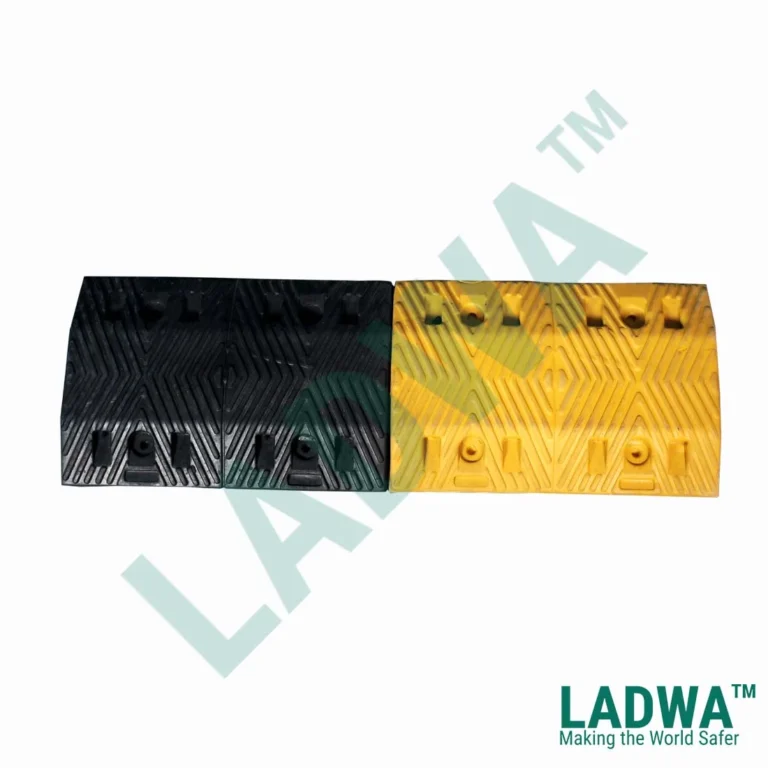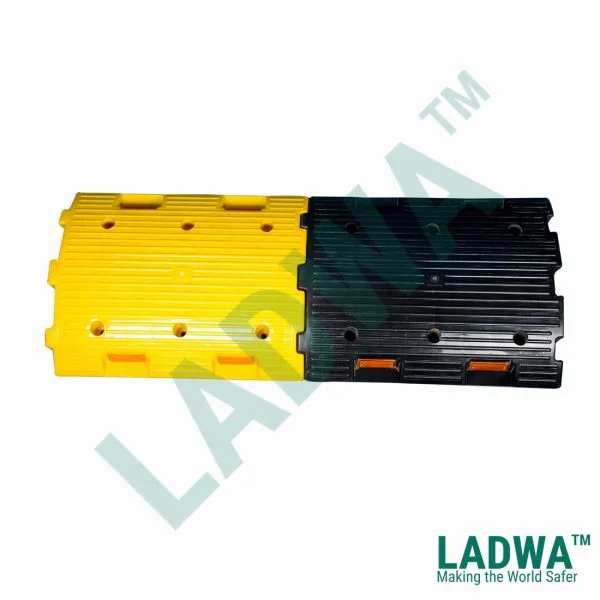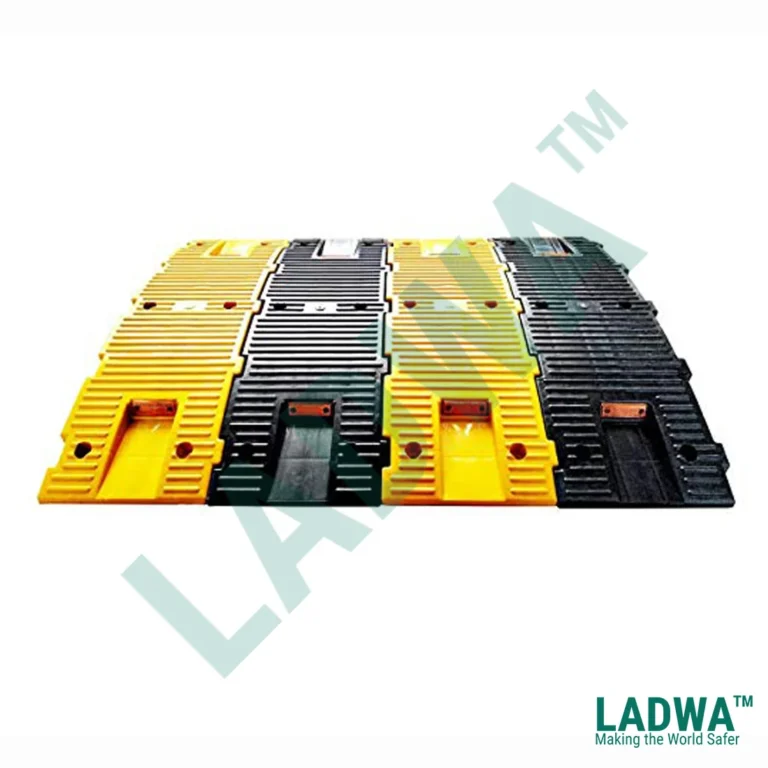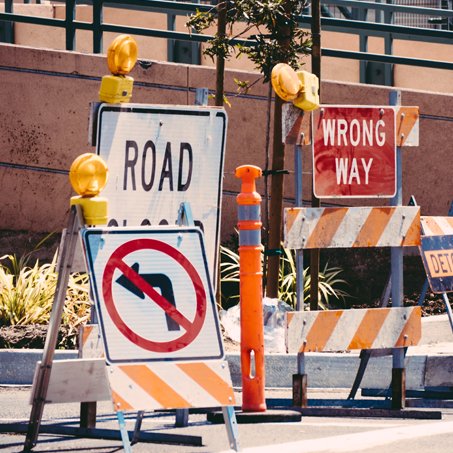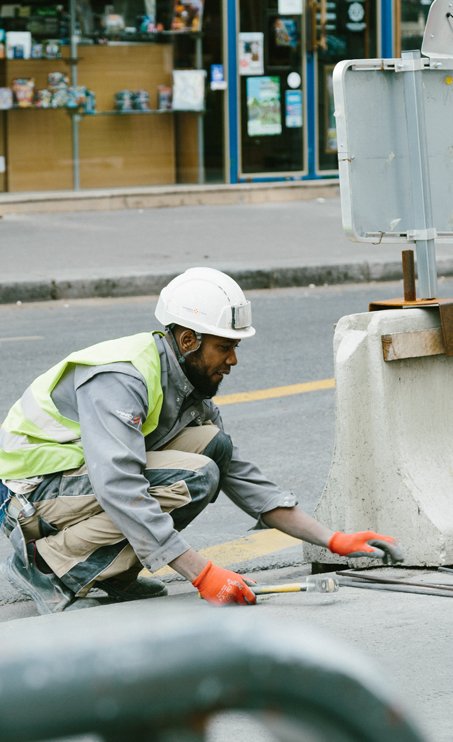Introduction
Speed breakers are an essential traffic calming measure on roads of all sizes. By forcing drivers to slow down, speed breakers can dramatically reduce accidents and injuries. In fact, studies have shown that speed breakers can reduce crashes by up to 45%. With the right speed breaker solution, we can make our roads safer for everyone.
Rubber speed humps, road humps, speed breakers , and rumble strips are some of the most popular speed breakers in use today. Rubber speed humps are modular rubber panels that can be quickly installed on asphalt or concrete roads. They gently slow traffic to the desired speed limit without damaging vehicles or negatively impacting emergency response times. Road humps are more permanent asphalt or concrete features. Speed breakers work similarly but have a flat section in the middle for easier crossing by emergency vehicles. Rumble strips use textured or raised pavement to create noise and vibration at high speeds.
Each types of speed breakers design has its benefits and drawbacks. Road conditions, traffic patterns, posted speed limits, and emergency vehicle access are key factors to evaluate when selecting the right speed breakers. Consulting with traffic engineers is highly recommended. Proper speed breaker design, placement, and spacing ensure maximum safety benefits.
When selecting the right speed breaker solution, it’s important to choose a supplier with extensive experience and proven results. For over 15 years, Ladwa Solutions Inc. has been an industry leader in speed breaker manufacturing and installation. Their in-house engineering team can provide comprehensive speed breaker recommendations tailored to your specific traffic conditions and safety goals. Ladwa offers all major speed breaker designs, using advanced materials and install techniques to maximize service life and road safety impact. Over 500 cities trust Ladwa speed breakers to calm traffic, reduce crashes, and protect vulnerable road users. Partnering with experts like Ladwa Solutions ensures you get the most effective speed breakers to make your streets safer.
With the help of well-designed speed breakers, we can reduce reckless driving behaviors and protect vulnerable groups like pedestrians and cyclists. This comprehensive guide explores all the most important speed breaker options in detail to help you make the ideal choice for your unique road safety needs. Let’s work together to create safer, more livable streets.
Why Speed Breakers Are Must in Road Safety?
Speeding is one of the biggest contributors to road crashes and fatalities worldwide. Speeding reduces a driver’s ability to safely navigate traffic conditions and increases the risk of severe injuries in a crash due to the laws of physics. By managing speeds, road speed breakers play a crucial role in overall road safety and accident prevention.
The relationship between speed and crashes is well-established. Studies have conclusively shown that higher speeds dramatically increase both the likelihood of a crash and the severity of crash outcomes. For example, a pedestrian struck by a vehicle traveling at 50 km/h has an 85% chance of being killed compared to a 45% chance of death at 40 km/h. By forcing drivers to slow down to safe speeds, speed breakers greatly reduce the risks.
Speed breakers are proven to decrease crashes. Research of traffic calming measures in the UK found that road humps reduced vehicle crashes by about 45% on 30 km/h roads and 53% on 40 km/h roads. In the US, speed humps on residential streets lowered crash rates by 26-44%. Speed breakers are especially impactful in areas with high pedestrian traffic like school zones or urban centers.
By mandating safer driving speeds, speed breakers allow other road users like pedestrians and cyclists to better judge gaps in traffic and cross safely. They also give drivers more time to react to avoid potential collisions. Speed management through speed breakers is one of the most reliable and cost-effective ways to save lives on our roads. Their widespread implementation is crucial for achieving Vision Zero goals.
What Are the Different Types of Speed Breakers?

Speed breakers, also known as speed bumps or traffic calming devices, are helpful tools used to enforce lower speeds on roadways. They come in a variety of shapes and sizes, each with its own advantages and disadvantages. Here are the different types of speed breakers commonly used:
Traditional Road Speed Breakers
Traditional road speed breakers are the original concrete or asphalt speed bumps that have been used for decades. These are permanently installed humps measuring 3-4 inches high and 1-2 feet wide. They force traffic to slow to speeds of 15-20 km/h to cross safely. Traditional speed breakers are highly effective but can damage vehicles that cross at high speeds and delay emergency response vehicles. They work best on residential streets and private roads with low speed limits.
Rubber Speed Humps/Breakers
Rubber speed humps/breakers are a more modern innovation made from recycled rubber. Individual modular panels connect together to form speed humps of various sizes. Rubber humps have tapered edges for a gentler slowing effect. They cause less vehicle damage compared to concrete and provide better emergency access. Rubber humps are easy to install on asphalt or concrete surfaces and can be removed or reconfigured as needs change. They are ideal for areas with mixed vehicle traffic.
Road Rubber Speed Breakers
Road rubber speed breakers are long strips of molded recycled rubber installed across the width of a road. They are 6-10 inches wide and 1-2 inches high. Road rubber speed breakers provide consistent speed control across all lanes. They slow vehicles more gradually than humps. Road rubber speed breakers can be used on highways, busy urban roads, and other multi-lane environments. Their flexibility reduces vehicle damage and noise.
The right speed breaker depends on factors like road type, speed limits, traffic volume, and emergency access needs. Ladwa Solutions, a leading speed breaker manufacturer, offers expert engineering services to recommend optimal designs for unique road conditions and safety goals. With over 15 years of experience and 500 city installs, they can reduce crashes and improve traffic safety through custom-tailored traffic calming.
Speed Cushions
Speed cushions are similar to speed bumps but are smaller and spaced closer together. This design allows for a smoother ride for bicycles and motorcycles while still effectively slowing down cars. They are often made of rubber or recycled plastic.
Speed Tables
Speed tables are flat-topped, elevated sections of road that span the entire lane width. They are typically used in areas where a lower speed limit is desired for an extended distance, such as around schools or shopping centers.
Factors to Consider When Choosing Speed Breakers
Choosing the right speed breaker involves evaluating road conditions, traffic patterns, speed limits, and the needs of emergency responders. Some key factors include:
Traffic Volume and Speed Limits
The number of vehicles using a road daily and their typical speeds dictate the optimal speed breaker type. On residential streets with low volume, traditional speed bumps are affordable and effective options. For busier roads and higher speeds, long rubber speed breakers allow smoother speed reduction. All speed breakers must adhere to local speed limit rules and traffic engineering standards.
Road Types and Surrounding Environment
The design of the road itself is a major consideration. Speed bumps suit flat, straight roads with good visibility. Winding or hilly roads may require additional measures for safety. The surrounding environment also matters. In noise-sensitive areas like hospitals, rubber speed breakers create less disturbance. Temperature extremes can impact material performance.
Impact on Emergency Services and Public Transport
Speed breakers should not impede emergency response vehicles, public transport, or other priority vehicles. Maintaining gaps between speed breakers and using more gradual raised profiles allows rapid but safe passage. Communication and collaboration with emergency services and transit agencies is advised during selection and placement.
With data on all these factors, traffic engineers can model predicted effectiveness and support the optimal speed breaker choice. Proper speed breaker selection enhances road safety without negative consequences.
Road Speed Breaker Price Considerations
Along with road safety impact, cost is a key factor when selecting speed breakers. Agencies must balance affordability with quality to get the best value. Both upfront costs and long-term durability determine the total investment.
Budget Constraints and Cost-Effective Solutions
Traditional asphalt speed bumps are the most budget-friendly option, with costs as low as Rs.600 per bump. However, they must be replaced more often. Long-lasting rubber speed humps cost Rs.3000-5000 per panel but have a lifespan of 8-10 years. Road rubber speed breakers start around Rs.500 per foot installed. Agencies can select cost-effective solutions that meet safety goals.
Long-Term Cost Analysis
Looking beyond initial pricing provides a better picture of value. While concrete speed bumps require higher upfront investment, they last over 20 years with almost no maintenance. In contrast, inexpensive asphalt bumps may need replacement every 1-2 years. Estimating lifetime costs for materials, installation, maintenance, and replacement highlights the best long-term investment.
Ladwa is innovating speed breaker design to maximize ROI and road safety impact. By using advanced materials and engineering, Ladwa speed breakers have an extended service life compared to traditional designs. This reduces long-term replacement and maintenance costs. Ladwa’s focus on cost-effectiveness allows more speed breakers to be installed per budget, increasing overall traffic calming and crash reduction on dangerous roads. With Ladwa’s solutions, communities can affordably enhance road safety through smart speed bump procurement and placement.
Installation and Maintenance Tips
Properly installing and maintaining speed breakers is crucial for optimal safety performance and lifespan. Follow best practices for smooth implementation and sustained results.
Proper Installation Techniques
Correct installation procedures vary by speed breaker type in India. Asphalt bumps require compaction of hot mix asphalt at the proper thickness. Rubber speed humps must be carefully aligned and anchored per the manufacturer’s instructions. Road rubber speed breakers need adhesive application and edge sealing. Check for trip hazards or gaps. Avoid improper spacing or angles.
Maintenance Practices for Longevity
Regular maintenance keeps speed breakers effective. Inspect for damage after winter weather. Re-adhere loose rubber panels. Patch potholes or cracks in asphalt immediately to prevent further deterioration. Replace faded markings and reflectors for visibility. Power wash to remove debris and improve friction.
Follow any manufacturer maintenance guidelines. With proper installation and care, quality speed breakers will sustainably enhance road safety for years to come. Consult experts for material-specific best practices. Investing in maintenance yields significant long-term dividends.
Ladwa's Range of Speed Breaker Solutions
When searching for the ideal speed breakers for your roads, look no further than Ladwa. For over a decade, Ladwa has been committed to delivering best-in-class speed breakers and traffic calming solutions across India.
Ladwa Speed Breakers: Quality and Reliability
Ladwa brings extensive experience and expertise in road safety products. Their team of knowledgeable engineers provides guidance on selecting optimal speed breaker designs based on your specific needs. Ladwa utilizes advanced manufacturing processes and premium materials. Their speed breakers are rigorously tested to validate durability and performance.
Ladwa offers a full range of speed breakers. Their signature product is the patented Ladwa Hump. These precast concrete speed humps feature a unique parabolic design for smooth speed reduction. Ladwa also produces speed bumps, rumble strips, and other traffic calming devices.
For those seeking innovative solutions, Ladwa provides rubber speed humps crafted from recycled tires. Their humps are customizable, quick to install, and create less noise. Ladwa’s export-quality speed breakers comply with international road safety standards.
With Ladwa speed breakers installed on roads across India, their products have proven safety effectiveness time after time. Trust Ladwa for fail-safe speed management solutions. Contact Ladwa to learn more about their speed breaker options perfect for your needs.
Exploring the Product Key Features and Benefits of Ladwa Speed Breakers
- Rubber Road Humps – 50mm
Features:
- Carbon black rubber construction with LDPE reinforcement
- UV-resistant coloring for visibility
- Embedded glass reflectors
- Grooved top for drainage
- Modular interlocking design
- Dimensions of 50x42x5cm per hump
- Weight of 9kg per hump
- Black and yellow colors
Benefits:
- Gentler on vehicles than concrete
- Quick and easy installation
- Removable and reconfigurable
- Improves safety at gates/checkpoints
- Alerts drivers with high-vis colors and reflectors
- Durable for heavy vehicle traffic
- Prevents water pooling from rain
- Customizable modular hump configurations
- Eco-friendly recycled rubber material
- Plastic Road Hump – 75mm
Features:
- Made of carbon black plastic with LDPE reinforcement
- UV-resistant coloring for visibility
- Glass reflectors for nighttime visibility
- Grooved metal washers for bolt mounting
- Dimensions of 50x40x7.5cm per hump
- Weight of 1.6kg per hump
- Black and yellow color humps
Benefits:
- Durable high-grade PVC plastic material
- Weatherproof for long-term outdoor use
- High load bearing capacity
- Reduces vehicle speeds near gates/checkpoints
- Alerts drivers with reflective elements
- Easy mounting with bolts into road surface
- Long lifespan with durability and strength
- Pre-drilled grooves enable secure installation
- High visibility colors improve safety
- Lightweight for easy handling and portability
- Plastic Road Hump / Speed breaker – 75mm
Features:
- Made of carbon black plastic with LDPE reinforcement
- UV-resistant coloring for visibility
- Glass reflectors for nighttime visibility
- Grooved metal washers for bolt mounting
- Dimensions of 25x75x7.5cm per hump
- Weight of 0.85kg per hump
- Contains 4 humps – 2 black, 2 yellow
Benefits:
- Durable high-grade PVC plastic material
- Weatherproof for long-term outdoor use
- High load bearing capacity
- Reduces speeds near gates/checkpoints
- Alerts drivers with reflective elements
- Easy mounting with bolts into road
- Long lifespan with durability and strength
- Pre-drilled grooves enable secure install
- High visibility colors improve safety
- Lightweight for easy handling and portability
Conclusion
Speed breakers are a critical tool for traffic calming and road safety. This guide explored the major types of speed breakers, including traditional road bumps, innovative rubber speed humps, and long road rubber speed breakers. We discussed key factors to evaluate when selecting the ideal design for your specific conditions and needs. These include posted speed limits, road types, traffic patterns, emergency access requirements, costs, and more.
With so many options, it can be challenging to determine the perfect speed breaker solution for your situation. However, investing the time into thoughtful selection yields immense safety dividends. Well-designed and properly installed speed breakers reduce crashes and injuries in communities worldwide. They protect our most vulnerable road users and encourage prudent driving behaviors.
Prioritizing road safety starts with effective speed management. Each street and highway presents unique needs. By fully understanding the diverse benefits of different speed breaker applications, we can work to make every road safer.
Contact Ladwa to learn about their full range of tested and proven speed breaker products tailored for your environment. With the right speed breakers, we can build transportation networks where everyone arrives safely at their destination.


